Market Weakness Broadens, But Nvidia Holds The Line
The S&P 500 fell by more than 2.7% on Friday following rising trade tensions between the US and China. This resulted in the index breaking several technical indicators during the decline, including a drop below the 20-day moving average.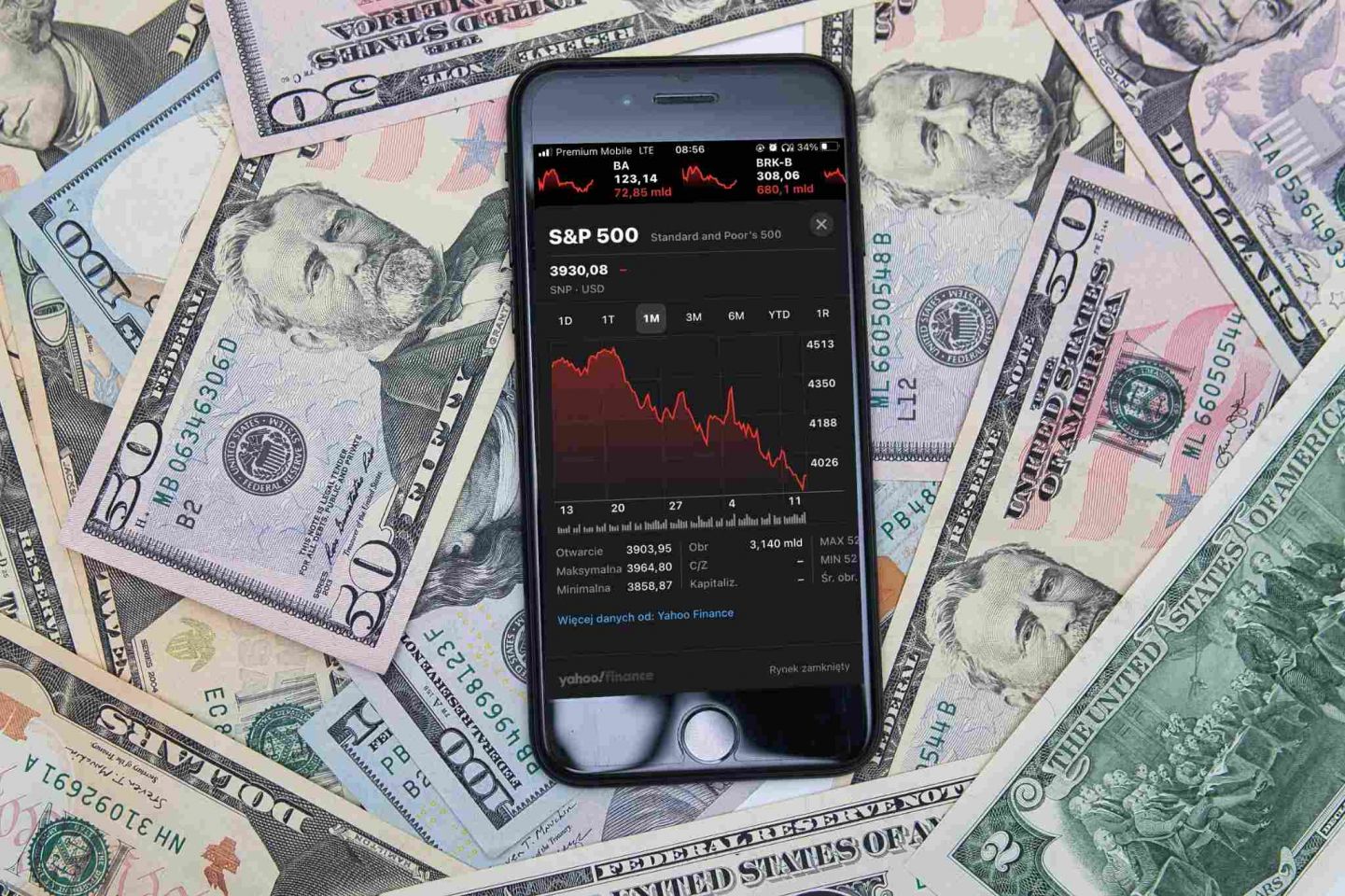
The S&P 500 has rarely traded below the 20-day moving average since the April 2025 lows. The 6,500 level is the next viable area offering support for the S&P 500, with 6,350 following. Additionally, the 20-day moving average may provide strong resistance, suggesting that any rebound attempt by the stock market may not last.
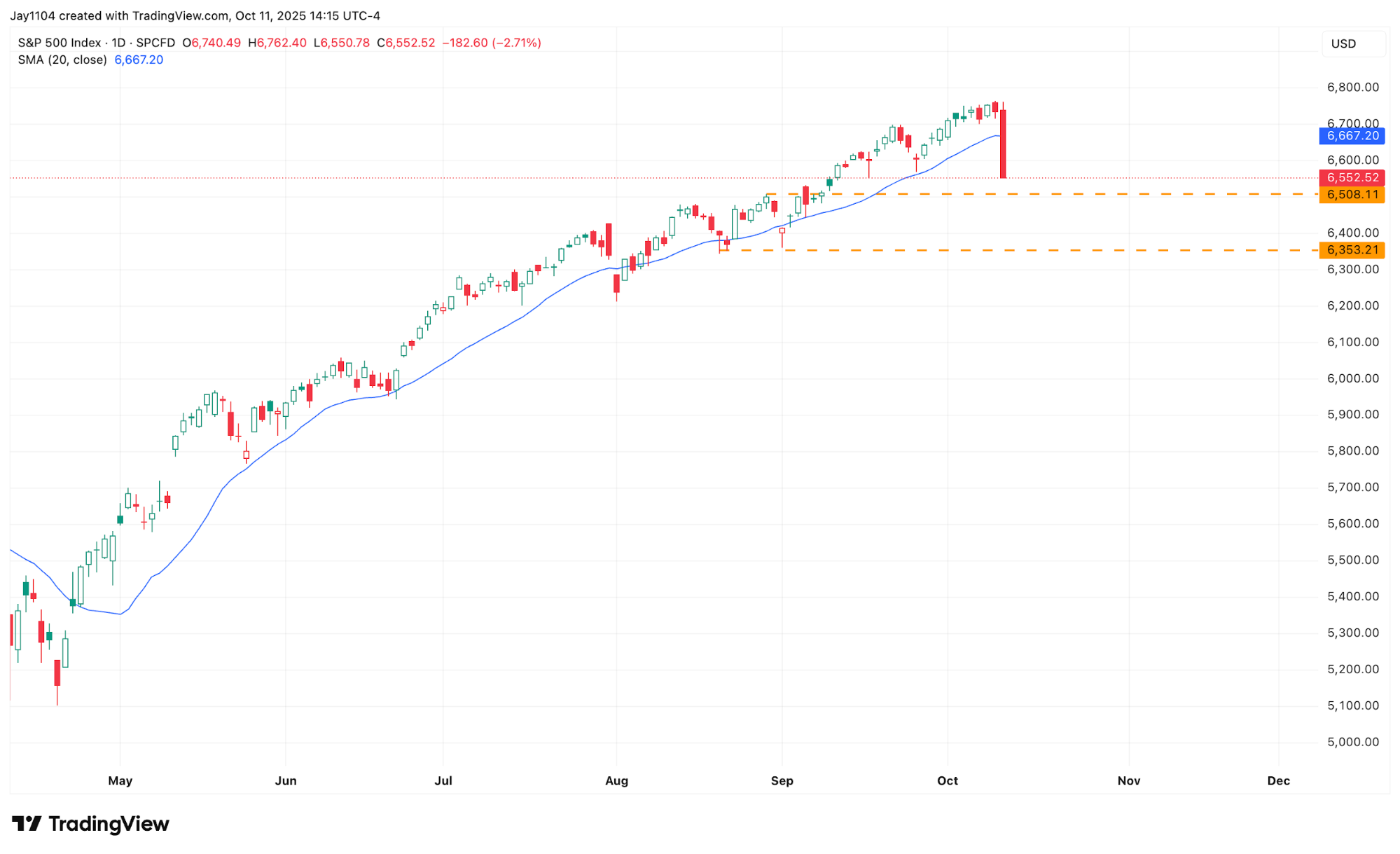
(Source: TradingView)
Past performance is not a reliable indicator of future results.
The technology sector was also hit hard on Friday, with Nvidia (NVDA) leading the decline. Interestingly, Nvidia did not break through support, which is a notable development. The stock fell to support at $183 and rebounded off the 20-day moving average. If the shares fall below both levels, there is a good chance they could decline to around $165.
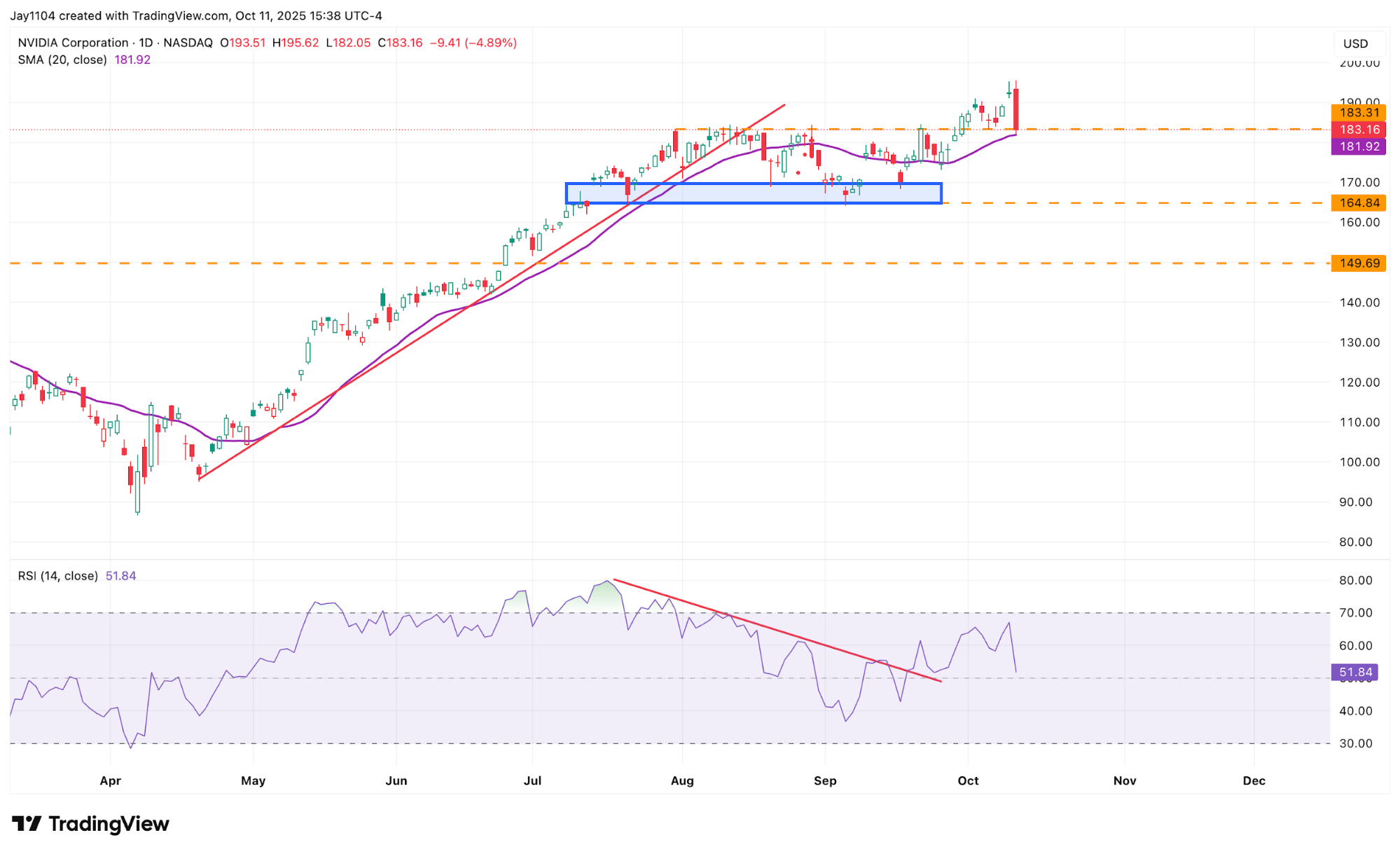
(Source: TradingView)
Past performance is not a reliable indicator of future results.
There is a good chance the index could rebound early on Monday, given how sharply one-day implied volatility climbed on Friday, reaching 25.7. Typically, however, the VIX 1-Day Index resets daily, which means it is likely to drop at the start of trading on Monday, 13 October. When implied volatility falls, it can temporarily help to lift stocks. However, once implied volatility resets and stabilizes, equity markets tend to stabilize as well. It is important to watch this short-term measure of implied volatility because it can give investors a true sense of whether buying in the market is real or just mechanical in nature.
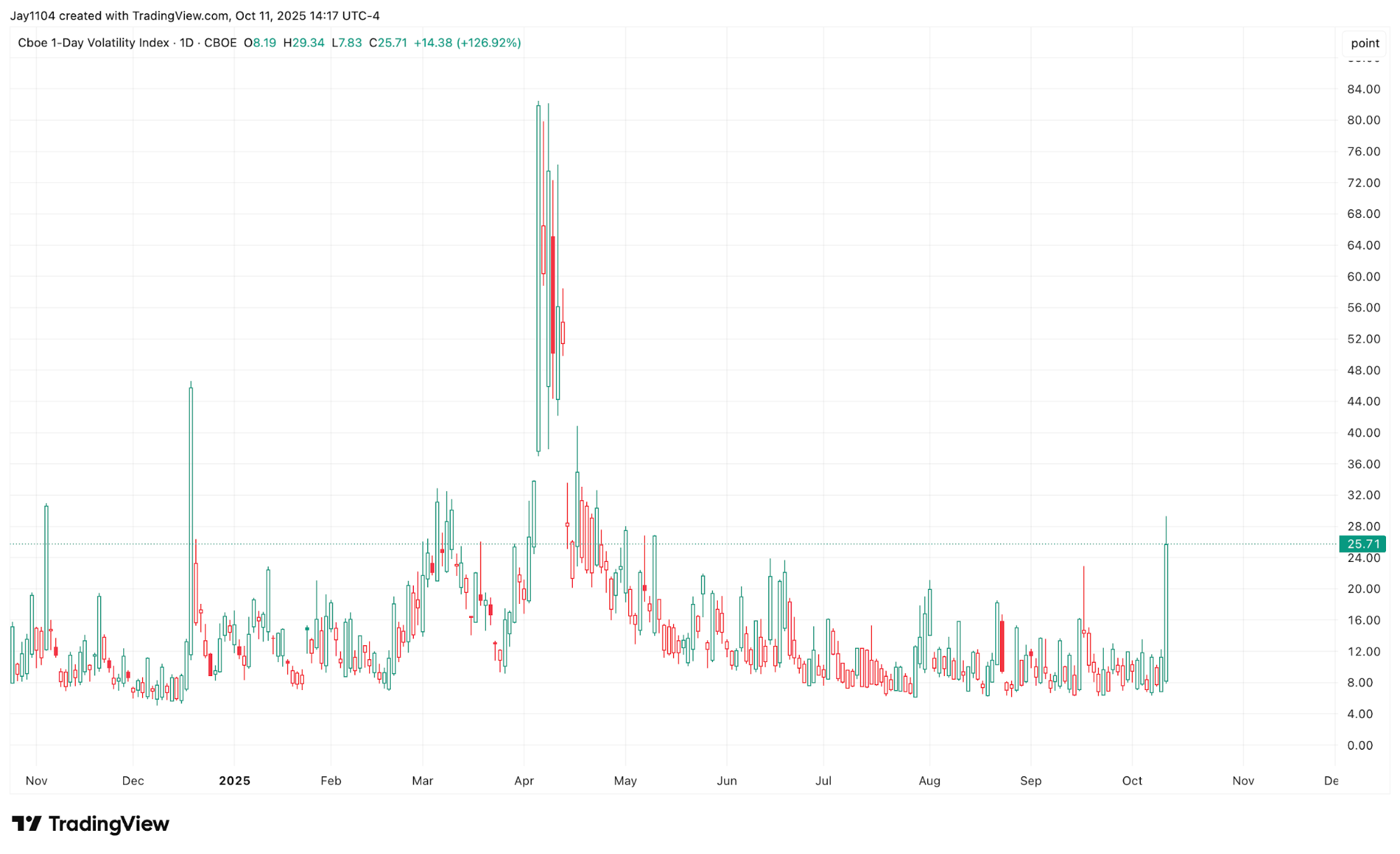
(Source: TradingView)
Past performance is not a reliable indicator of future results.
The iShares High Yield Corporate Bond ETF (HYG) also fell sharply, dropping below its 50-day moving average. There appears to be a reasonable chance that the HYG will find support around $79.50. At present, the ETF is approaching oversold territory, trading below the lower Bollinger Band, while the RSI is quickly nearing 30. These oversold conditions indicate that the HYG is due to consolidate for at least a day or two.
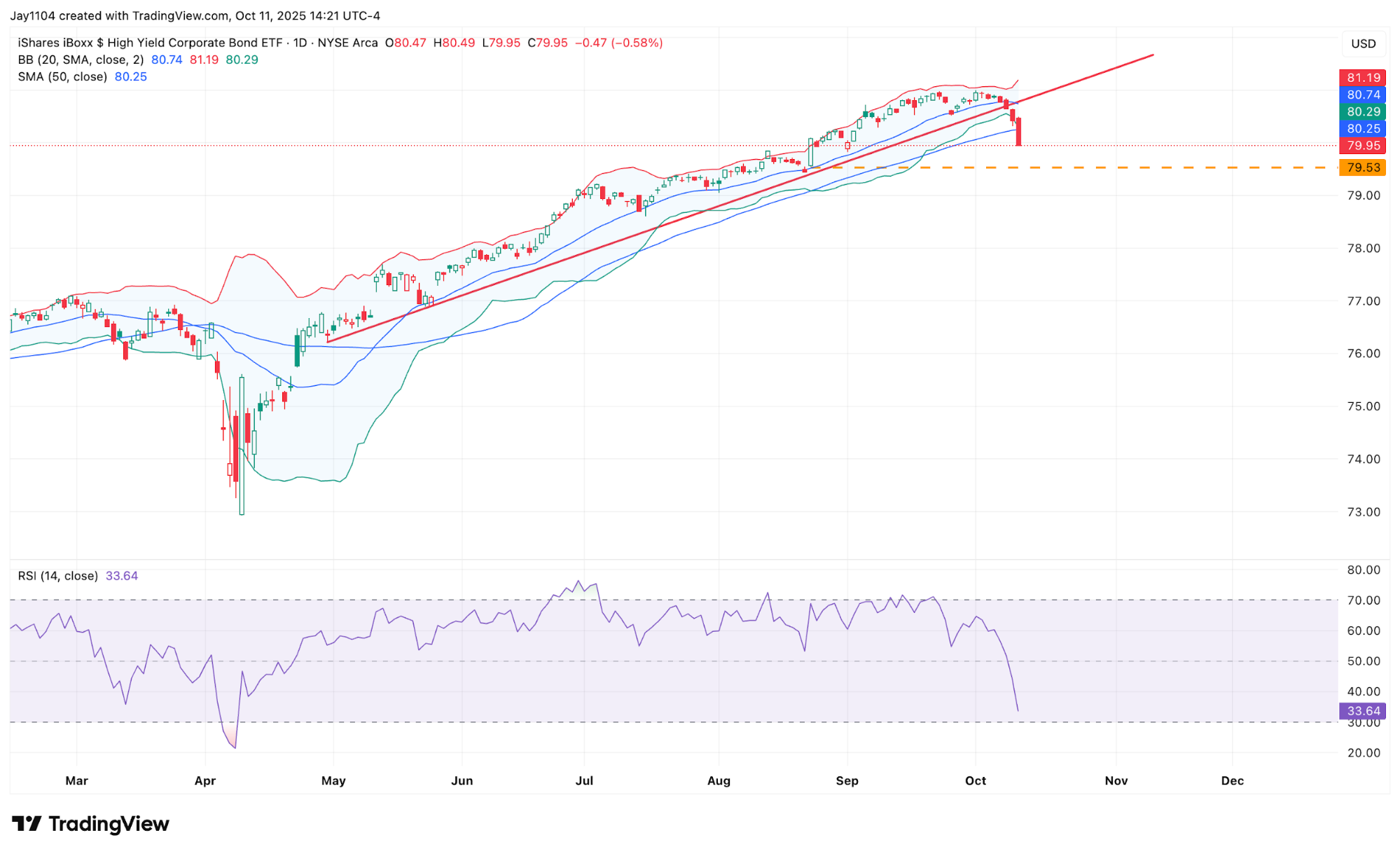 (Source: TradingView)
(Source: TradingView)
Past performance is not a reliable indicator of future results.
Private equity names also fell sharply, with Blackstone (BX) breaking below the support region at $158. There appears to be a potential level of support around $151, and with the shares now trading below the lower Bollinger Band and showing an RSI of 24, the stock could find support at these lower levels. However, a break below $151 would be a significant negative development and could open the door to a decline towards $139.
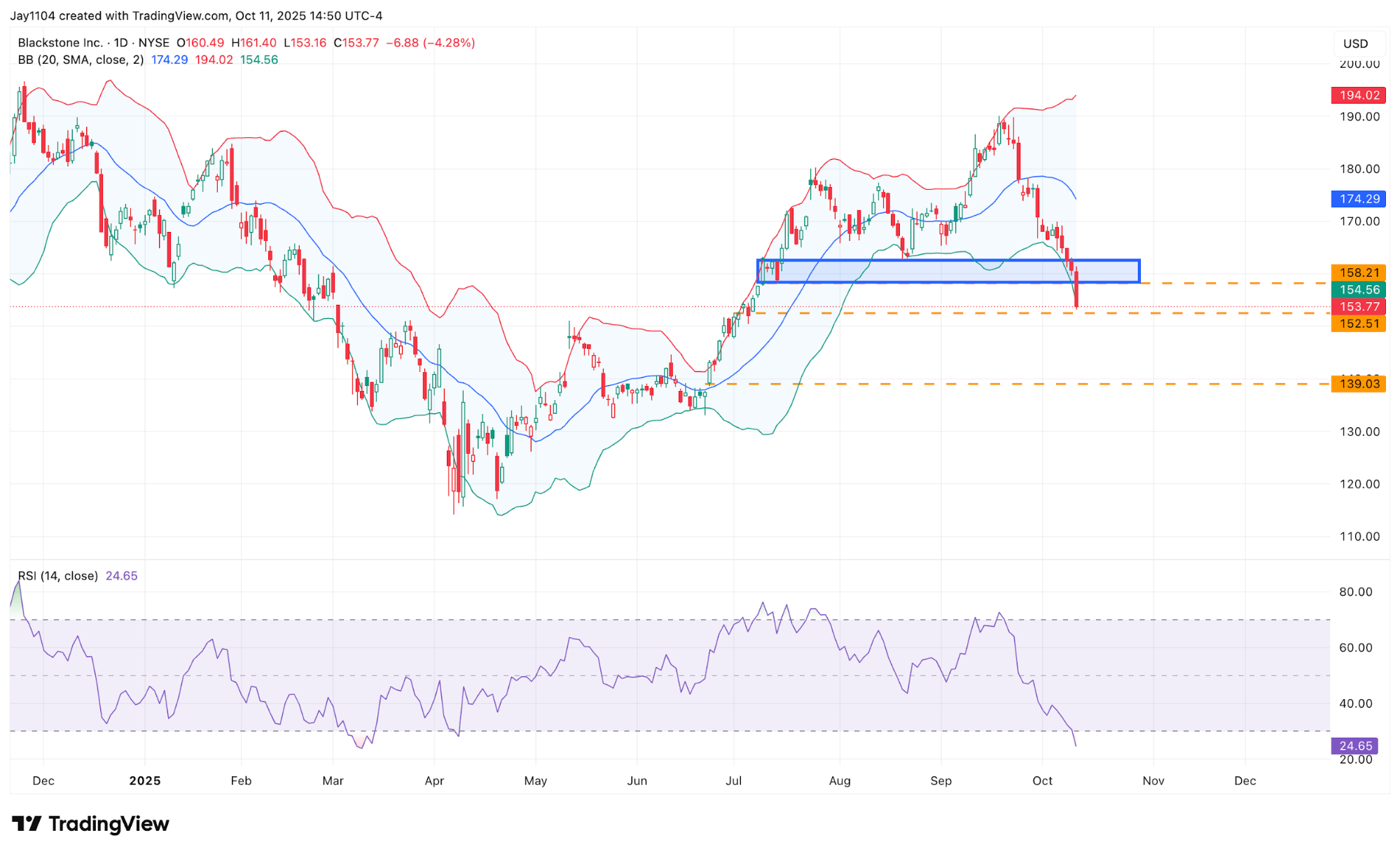 (Source: TradingView)
(Source: TradingView)
Past performance is not a reliable indicator of future results.
The weakness in private equity stocks appears to have spread to regional banks, as evidenced by the S&P Regional Bank ETF (KRE) falling by more than 4% on Friday alone. More importantly, the ETF broke through three layers of support, dropping below the uptrend trendline that began in April, as well as horizontal support at $62.50 and $61.00. The next notable layer of support for the KRE does not appear until around $58.30, while the previous support levels are now likely to act as resistance.
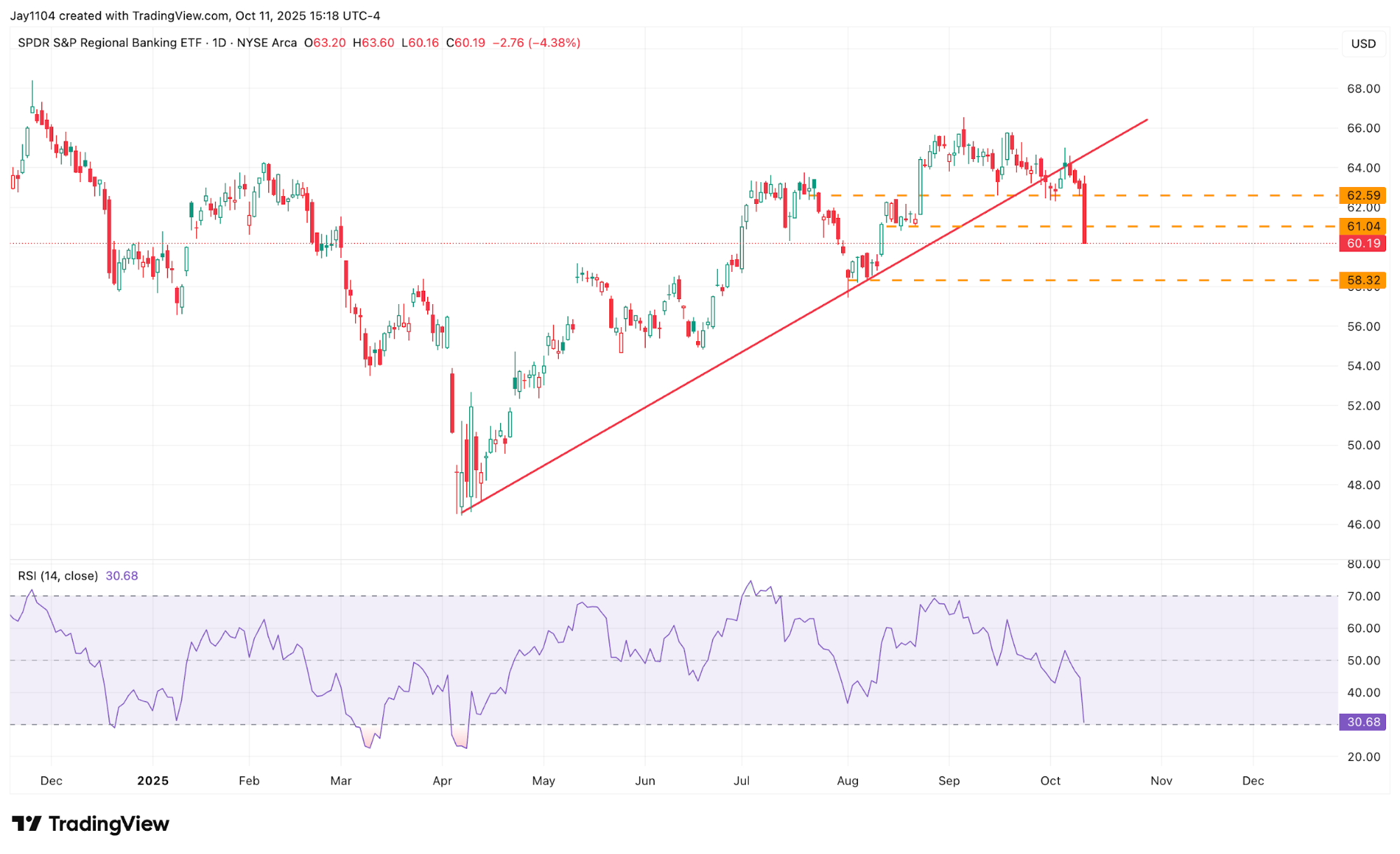
(Source: TradingView)
Past performance is not a reliable indicator of future results.
It wasn’t much better for the big bank financials either, with the Financial Select Sector SPDR (XLF) ETF dropping by more than 2% and also slicing through a major uptrend and support around $52.90. The big decline is going to put even extra focus on the banks that report earnings results the week of 13 October, with JPMorgan, Goldman Sachs, Citigroup, and Wells Fargo reporting on 14 October, and Bank of America and Morgan Stanley on 15 October.
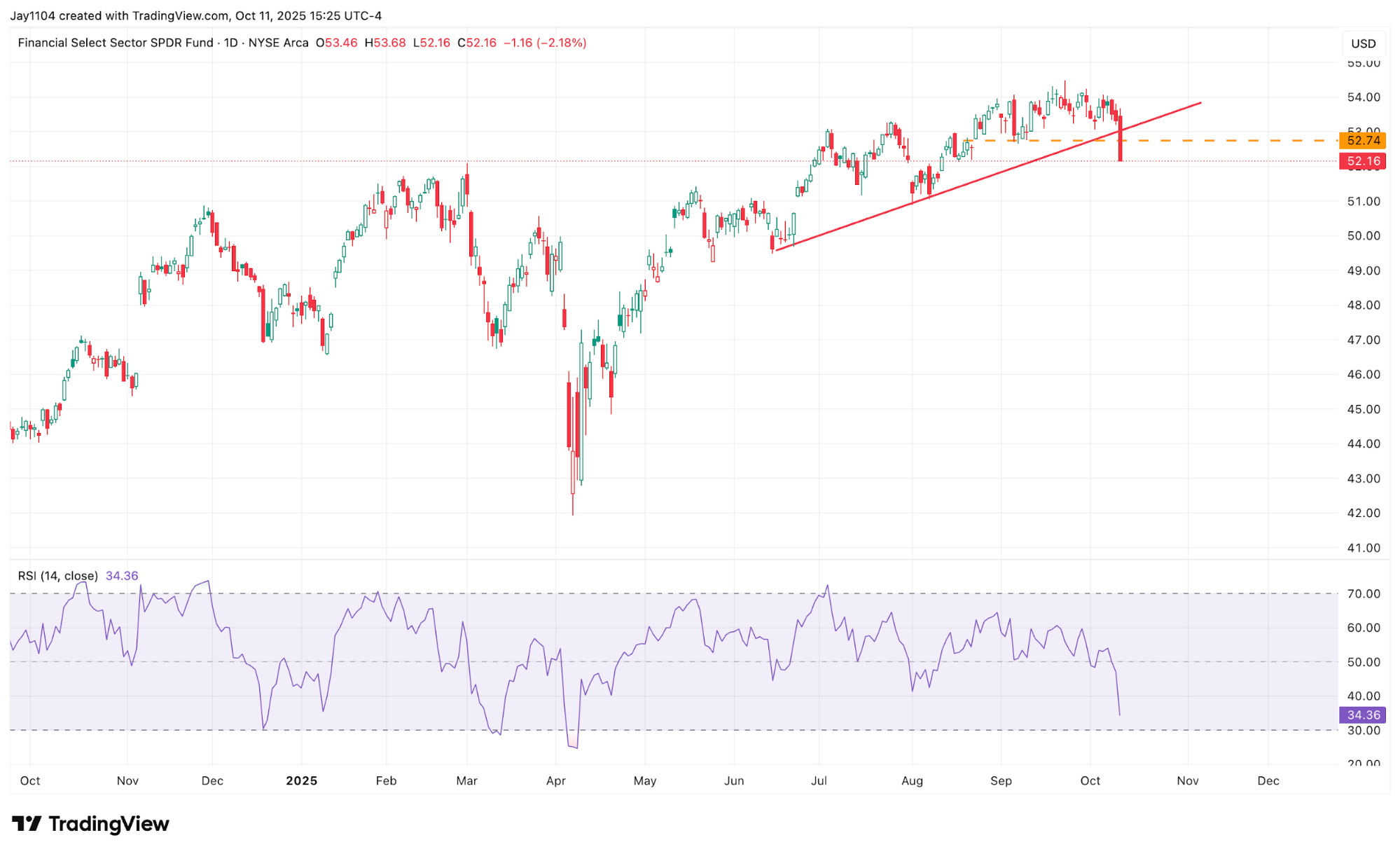 (Source: TradingView)
(Source: TradingView)
Past performance is not a reliable indicator of future results.
Whether the US equity market can sustain a move lower may simply come down to Nvidia’s ability to break below support and the 20-day moving average. If Nvidia manages to hold those two levels, it will likely be difficult for the headline S&P 500 index to experience much of a decline, as this would suggest the AI trade could remain intact for some time longer.
That said, it is entirely possible the rest of the market struggles as it has for the last couple of weeks.